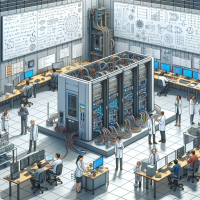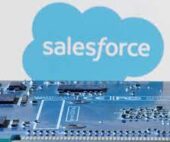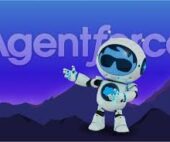AI Agents Interoperability
The Future of AI Agents: Why Interoperability is the Key to Unlocking True Automation The Challenge of Multi-Agent Collaboration AI agents like Agentforce can reason, act autonomously, and execute complex workflows—but can they work together seamlessly? Our previous exploration of agentic maturity revealed that reaching Level 4 (multi-agent orchestration) requires more than just advanced AI—it demands industry-wide standards for agents to discover, authenticate, and communicate across platforms. Without a common interoperability framework, the AI agent ecosystem risks fragmentation, limiting the potential for end-to-end automation in enterprise environments. Why Agent Interoperability Matters Customers operate in heterogeneous tech stacks, using diverse AI frameworks like: While Agentforce offers a powerful way to build agents, we recognize that interoperability is essential for true scalability. That’s why we partnered with Google and 50+ leading tech vendors to develop A2A—the industry’s first agent-to-agent interoperability protocol. Salesforce’s Contribution: The Agent Card We introduced the Agent Card—a lightweight JSON contract that defines an agent’s:✔ Capabilities✔ Identity & compliance tags✔ Trust Score Google adopted this concept as the keystone of the A2A protocol, ensuring seamless capability discovery and version negotiation between agents. The Business Case for Agent Interoperability An open agent-to-agent protocol enables: 1. Breaking Down Vendor Silos 2. Accelerating Time-to-Value 3. Strengthening Governance & Security The 10 Building Blocks of Agent Interoperability To enable scalable, trusted agent collaboration, we’ve defined a foundational framework: Building Block Function Agent Metadata Card A digital “business card” detailing an agent’s capabilities, identity, and technical specs. Identity & Authorization (RBAC) Ensures agents only access data and tools they’re permitted to use. Registry & Discovery A dynamic “address book” where agents register and find each other. Communication Patterns Standardized protocols for real-time and async interactions. Agent Trust Score Measures reliability, ethics, and compliance. State & Conversation Management Tracks ongoing interactions with a unique conversation ID. Multimodal Support Enables text, voice, image, and video interactions. Observability & Auditability Monitors performance, flags issues, and logs actions. Security & Compliance Encrypted data, PII masking, and threat detection. Scalability & Performance Handles surges in demand without slowdowns. Real-World Use Cases 1. Customer Service 2. Sales & Partnerships 3. Financial Services The Path Forward Agent interoperability isn’t just a technical challenge—it’s a strategic imperative for enterprises adopting AI at scale. By embracing A2A and open standards, businesses can:✅ Eliminate vendor lock-in✅ Reduce integration costs✅ Unlock seamless automation The future isn’t just AI agents—it’s AI agents that work together. How could agent interoperability transform workflows in your organization? Like Related Posts Salesforce OEM AppExchange Expanding its reach beyond CRM, Salesforce.com has launched a new service called AppExchange OEM Edition, aimed at non-CRM service providers. Read more The Salesforce Story In Marc Benioff’s own words How did salesforce.com grow from a start up in a rented apartment into the world’s Read more Salesforce Jigsaw Salesforce.com, a prominent figure in cloud computing, has finalized a deal to acquire Jigsaw, a wiki-style business contact database, for Read more Service Cloud with AI-Driven Intelligence Salesforce Enhances Service Cloud with AI-Driven Intelligence Engine Data science and analytics are rapidly becoming standard features in enterprise applications, Read more



















